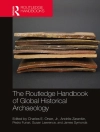Tangatatau Rockshelter on Mangaia Island in the Southern Cook Islands, excavated by a multidisciplinary team in 1989-1991, produced one of the richest stratigraphic sequences of artifacts, faunal assemblages, and archaeobotanical materials in Eastern Polynesia. More than seventy radiocarbon dates provide a tight chronology from AD 1000 to European contact in about 1800. The faunal assemblage provides compelling evidence for dramatic reductions in indigenous bird life following Polynesian colonization, one of the best documented cases for human-induced impacts on island biota. Tangatatau is unique among Polynesian archaeological sites in the extent to which fishing was dominated by freshwater fishes and eels. The site also yielded an extensive suite of carbonized plant materials, including sweet potato tubers, demonstrating that this South American domesticate had reached Eastern Polynesia by AD 1400. Mangaia illustrates the often far-reaching consequences of human land use and resource exploitation on small and vulnerable islands.
Patrick Vinton Kirch
Tangatatau Rockshelter [PDF ebook]
The Evolution of an Eastern Polynesian Socio-Ecosystem
Tangatatau Rockshelter [PDF ebook]
The Evolution of an Eastern Polynesian Socio-Ecosystem
Compre este e-book e ganhe mais 1 GRÁTIS!
Língua Inglês ● Formato PDF ● Páginas 348 ● ISBN 9781938770609 ● Editor Patrick Vinton Kirch ● Editora Cotsen Institute of Archaeology Press ● Publicado 2017 ● Carregável 3 vezes ● Moeda EUR ● ID 6914008 ● Proteção contra cópia Adobe DRM
Requer um leitor de ebook capaz de DRM












